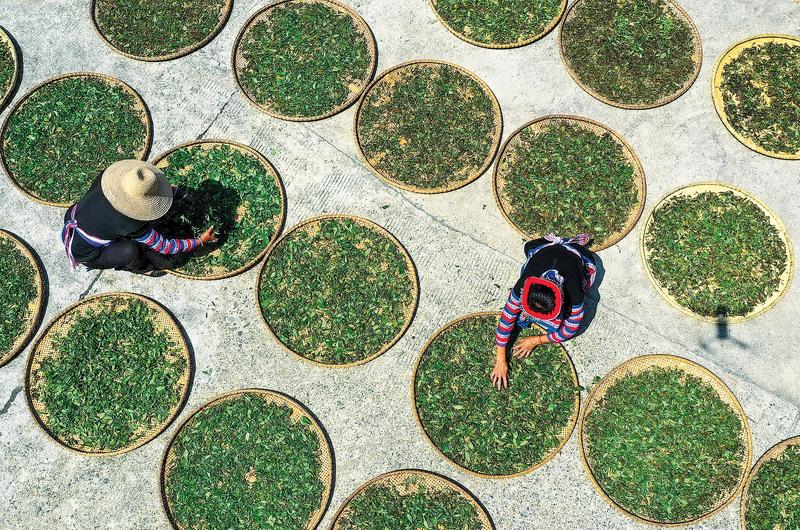Millennia-old brews promote exchanges and mutual learning among civilizations
 Tea farmers dry tea leaves under the sun in Changning, Hunan province, in September last year. (ZHOU XIUYUCHUN / XINHUA)
Tea farmers dry tea leaves under the sun in Changning, Hunan province, in September last year. (ZHOU XIUYUCHUN / XINHUA)
Chinese tea culture, whose influence has been intertwined with the nation throughout much of its history, was on Tuesday added to the UNESCO list of intangible cultural heritage.
Traditional tea processing techniques and their associated social practices in China were added to UNESCO’s Representative List of the Intangible Cultural Heritage of Humanity.
The status was conferred by the Intergovernmental Committee for the Safeguarding of Intangible Cultural Heritage in Rabat, Morocco. The newly inscribed item consists of many elements, such as knowledge, skills and practices concerning the management of tea plantations, the picking of tea leaves and the processing, drinking and sharing of tea.
The techniques are mainly found in provinces such as Zhejiang, Jiangsu, Anhui, Fujian and Hunan among others. Associated social practices, however, are spread throughout the country and are shared by many ethnic groups. In China, 44 registered national-level intangible cultural heritage entries from 15 provincial-level administrative divisions are related to tea.
Over 2,000 tea varieties, mainly in six categories — green, black, yellow, oolong, white and dark — are grown in China. Core skills include shaqing (enzyme inactivation), menhuang (yellowing), wodui (piling), weidiao (withering), zuoqing (leaves shaking and cooling), fajiao (oxidation or fermentation) and yinzhi (scenting).
“The inscription of the elements into the UNESCO list marks the significant contribution made by Chinese culture to the world,” said Wang Chenyang, director of intangible cultural heritage department of the Ministry of Culture and Tourism.
“Tea helped to promote exchanges and mutual learning among the world’s civilizations through the Silk Road and other ancient trade networks,” Wang said.
As the bidding document from the Ministry of Culture and Tourism to UNESCO explained, tea is ubiquitous in Chinese people’s daily lives. Steeped or boiled tea is served in homes, workplaces, tea houses, restaurants and temples and used as an important medium for communication in socializing and ceremonies such as weddings, apprentice-taking and sacrifices.
“The practices of greeting guests with tea and building good relationships within families and among neighborhoods through tea-related activities are shared among multiple ethnic groups, and provide a sense of identity and continuity for communities, groups and individuals concerned,” the document wrote.
“Through producing, brewing and tasting tea, bearers and practitioners enrich their lives, maintain a peaceful an inclusive mindset, and thereby cultivate a mild and reflective personality, and improve their internal realms and promote self-cultivation,” Wang added.
The practices also demonstrate the humanistic spirit of modesty, harmony, comity and respect, contribute to harmony within families and among people, and enhance cultural identity and social cohesion, the official said.
There are over 40 vocational colleges and 80 universities in China that have set up majors in tea science or tea culture.
The new inscription is the 43rd entry from China on the Representative List of the Intangible Cultural Heritage of Humanity.


